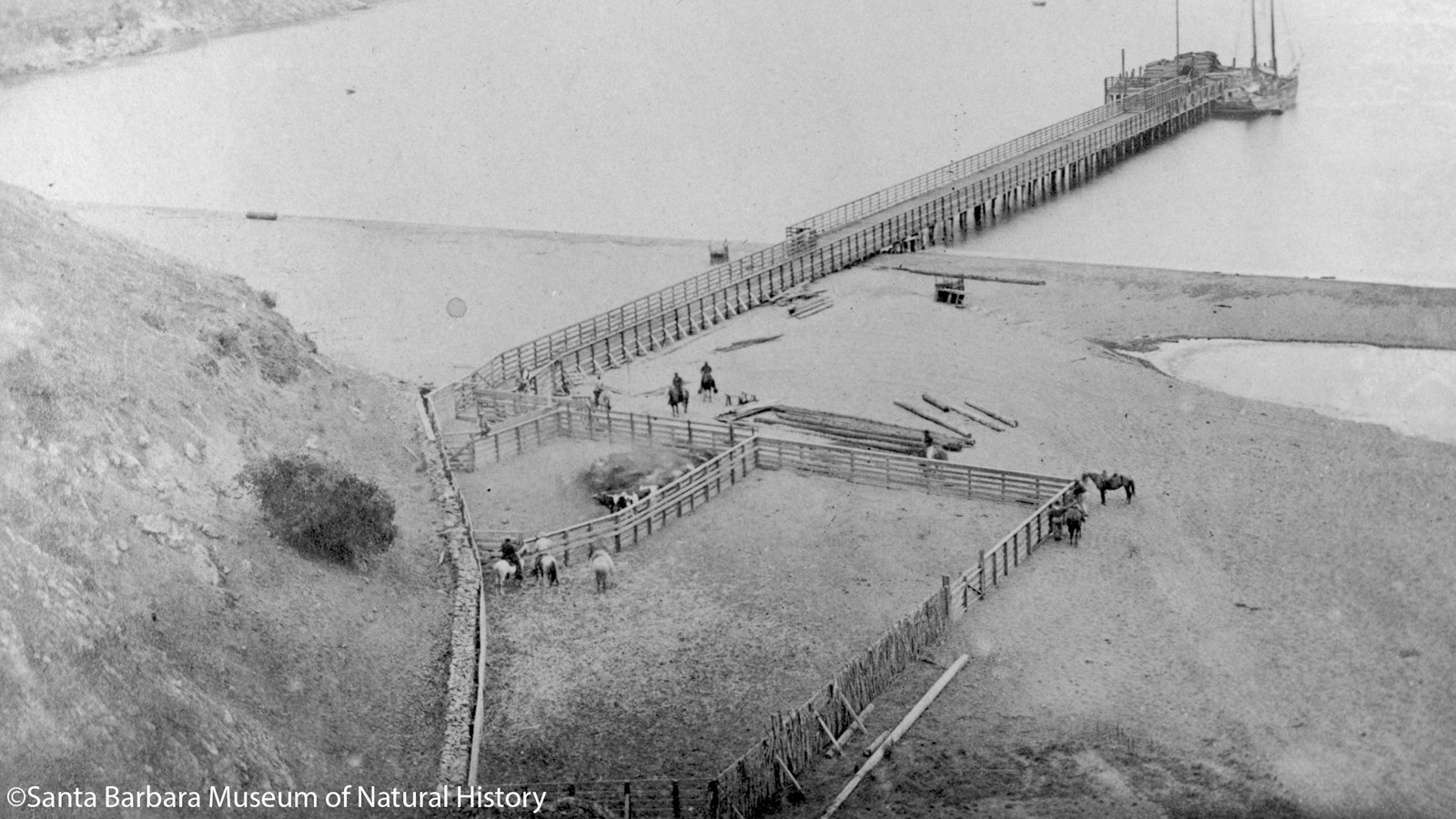Last updated: April 13, 2021
Place
Stop 2: Prisoner's Harbor Tour

Santa Barbara Museum of Natural History
Preserving the Past
Isolated and far behind the times as the island was, it was a demonstration of how a group living as we did could learn to make do with what we had.
-former ranch superintendent, Clifford McElrath, On Santa Cruz Island
While the isolated island offered ranchers several advantages over the mainland, including no predators and the world's best fence (the ocean), it created special challenges as well. Supplying such a remote outpost was probably the biggest challenge. The transportation of supplies and stock onto and off the island was always an adventure-the distance to the mainland, rough seas, and expense made it very difficult. However, as former ranch superintendent Clifford McElrath wrote in his memoir On Santa Cruz Island, ranchers would adapt to the difficulties of isolated island life through self-reliance and by "learning to make do with what [they] had." Pier Gherini, former owner of the eastern portion of the island, wrote a humorous story in "Island Rancho" about the self-reliance of Joe Griggs:
"Joe could do most anything, except write. An expert rider, huntsman, and general ranch worker, Joe also was a mechanical whiz. He once took a 1915 Waterloo Boy tractor that had been "mothballed" because the early workmen wouldn't touch it, and used the parts to make a sawmill. The fact that we didn't need a mill in no way detracted from the ingenuity and skill that went into its making. All of these people had one common characteristic. They knew and loved the Island. Each in his own way was rugged and self-reliant. They took its beauties and hardships in stride."
Although livestock ranching on Santa Cruz Island began in the 1850s, it was under the direction of Justinian Caire beginning around 1880 that a variety of agricultural and ranching endeavors were developed in an effort to create a self-sufficient operation on the island.
In California's Channel Islands, Marla Daily writes that, "Buildings including several ranch houses, bunkhouses, barns, wineries, a chapel, mess hall, blacksmith shop, and saddle shop were constructed. Wherever possible, native island materials were used. Kilns were built for the manufacture of bricks and limestone mortar. Stones were quarried and cut to shape on the island. A resident blacksmith forged wrought-iron fittings, railings, and hinges used on many of the buildings. Employees included masons, carpenters, dairymen, team drivers, vintners, a wagon maker, cobbler, butcher, seasonal grape pickers and sheep shearers, a sea captain and sailors to run the company's 60-foot schooner. Hay, vegetables, and over a dozen varieties of grapes were grown, in addition to almond, walnut and other fruit and ornamental trees. Sheep, cattle, horses, and pigs were raised."
Since the island was too large to manage from the one main ranch in the Central Valley, other facilities, or out-ranches like the one at Prisoners, were developed. Justinian Caire realized the importance of Prisoner's Harbor as the only good landing for goods, and set to work improving the small area known as La Playa (the beach) as the entrance gate to his island enterprises. Its facilities were of the utmost importance to the island's owners as the shipping facility, entry point for visitors, and warehouse location. Please see the Prisoners Harbor points of interest section (pages 52-57) for more information about the historical features in the area.
Ranching by descendants of Justinian Caire, the Gherini family, continued on the eastern end of the island between 1926 and 1984. The Gherini era ended in February 1997 when the National Park Service acquired the last interest from the family. Ranching also continued on the rest of the island until 1987 when the Nature Conservancy acquired the property. In 2000, the Nature Conservancy donated 8,500 acres of its holdings, including the Prisoners Harbor area, to the National Park Service.
Today, the National Park Service is preserving the historic area so visitors always will have the chance to remember and understand this unique part of the island's past.
